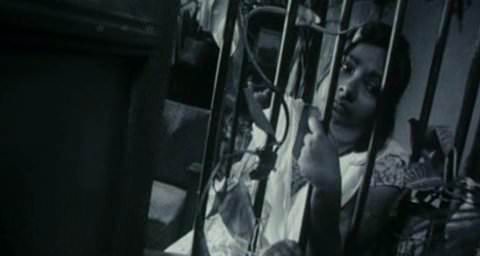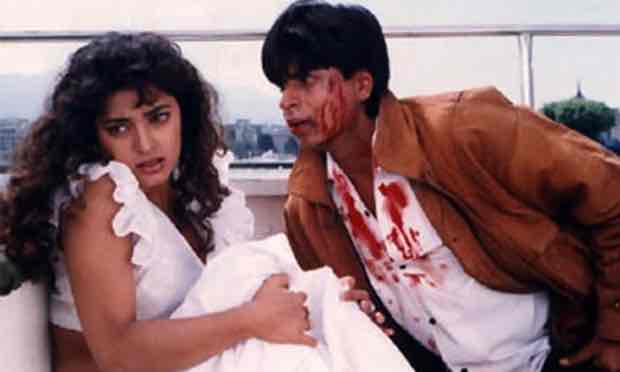This article is part of the #GBVInMedia campaign for the 16 Days Of Activism global campaign to end gender-based violence. #GBVInMedia campaign analysis how different kind of mainstream media (mis)represents/reports gender-based violence and broadens the conversation from violence against women to violence against people from the queer community, caste-based violence and violence against people with disabilities. Join the campaign here.
I have been an ardent fan and follower of cinema since I had baby teeth. I used to glue my eyes on-screen no matter what the content was. It took me a while to have enough sense to make out what was going on, and it took few more years to understand that as a viewer I had the right to judge and critique whatever I perceive (until then I was under the impression that whatever shown on-screen is right and factual).
It took me another decade to realize that cinema was wrongfully depicting violence against women (VAW) for years. Indian cinema has endorsed the Indian cultural delineation of men and women for years, while western cinema claims to portray gender equality, however sexually objectifying women in reality. Indian cinema has repeatedly used some movie plots with respect to female protagonists that are outright annoying.
Heroines falling for their stalker
Darr (1993) is a national award-winning cult classic feature about love, passion and obsession. Rahul (Shah Rukh Khan) is madly in love with Kiran (Juhi Chawla) and he stalks her with unexpected visits and intimidating phone calls. He arrives at her birthday party to lay a kiss on her. Kiran is traumatised from the experience and her only source of valour is her fiancé Sunil (Sunny Deol). I hated the idea of Kiran being an emotionally weak woman who is depended on a man, but then that’s what the culture reinforced no matter how educated or rich she is. The pro-feminist element of this film is that it shows Rahul’s actions as something that’s unethical or in a broader sense, a criminal act. But then at the end, we feel sorry for Rahul as his vehement for Kiran was a result of his mental instability even if his actions cannot be justified morally. However, stalking isn’t just the villain’s cup of tea.
Let’s analyse this year’s highest grossing Indian film Baahubali (2015). Baahubali started by showing a mortally injured woman Sivagami (Remya Krishnan) fight and kill two armed men with a baby in her arms. Then we are introduced to another woman named Sanga (Rohini) who has a strong hold and voice in her community. Then comes in Avantika (Tamannah Bhatia) a warrior princess with an aim. Personally, when I saw her in action I was thrilled. It was a role totally different for Tamannah as an actress and a heroine from Telugu industry in general. This excitement was short-lived till we saw her getting stalked by Sivudu (Prabhas) because he was in ‘love’ with her. Without her knowledge he followed, painted a tattoo on her arms and shoulders and when she confronted him, he molested her by stripping her warrior clothes and replaced them with more ‘feminine’ ones. Avantika is enraged with his moves till she stands before the waterfalls and sees her own ‘milky-bodied’ image.
There has been a lot of hue and cry about this scene as the “rape of Avantika“. What Sivudu did is no different from what Rahul in Darr was doing to Kiran; this is a combination of stalking and molesting. Sivudu violated Avantika’s autonomy and the audience believed that was okay and even applauded at the idea of a warrior princess being tamed with Sivudu’s act of ‘love’. This scene also reinforced patriarchal notions and sidelined a woman’s role in terms of ambition. Some claimed that villains no longer molest on-screen as the heroes have taken over it.
Cult Classic Dilwale Dulhaniya Le Jayenge (1995) is another example. The movie focused on showing Simran as an arrogant woman with her rude back talks and stares, when Raj flirted with her in a way she didn’t like. In Raanjhanaa (2013), Dhanush’s character impressed Zoya (Sonam Kapoor) with suicide attempt. Trust me ladies, when a guy does that call the police or an ambulance. Many films have heroes following their women to win their heart and as much as they like to talk against VAW they should quit showing perverts as greatest heroes.
Hypermasculinity
We see ‘brave’ men fighting the villains, while the heroines are seen struggling and screaming loudly. The best they are able to do is beat their hands against the villains’ shoulders and chest, who in turn is unaffected by it. The villain is either shouting misogynist remarks or staring at her lasciviously. The hero comes in like a macho man and with a single punch, he send the villain flying in slow motion. The heroine then hugs her saviour feeling safe in his arms, hence reinforcing the notion that women are physically weaker than men and that they are meant to be protected from potential threats (rape & molestation) by ‘other’ men.
Depicting women as physically weak is one thing but depicting both the hero and villain as hypermasculine is extremely harmful. It is something that we are tired of watching at the same time it gives them authority over women based on who’s the winner, not giving any scope for women’s agency. Stars like Akshay Kumar (Singh is King), Ajay Devgan (Golmaal & Son of Sardaar) and Salman Khan (Dabangg, Wanted, Kick, Ek Tha Tiger) have specialised in creating hypermasculine image. This affects young men adversely who learn that they can physically hurt a woman if she doesn’t accept their ‘love proposal’.
Elements of rape and revenge films
Rape is the violation of an individual’s autonomy by another individual by force or otherwise. Rape is a subject or interest for the filmmakers and there have been many stories and experiments based on this theme. The result is either tragic or it is a journey of revenge for the victim. A separate genre termed as “rape and revenge” is mentioned in the film catalogue where the film’s structure involves: rape of the individual, her rehabilitation and finally the revenge. The revenge element is usually taken over by her parents, lovers or peers. In Indian cinema, that’s what happens in 90% films. This genre is pleasing for people in many ways as it showers hope on them and it fulfils their most violent fantasies as to what they want to do to those rapists. However, some of the story elements cannot be accepted or appreciated in terms of morality.
A woman’s dignity is valued more than her life
This annoying element is seen in almost every film. In Tamil film Paruthiveeran Priyamani’s character is brutally gang-raped and she asks her boyfriend for vengeance at the same she requests him to cut her into pieces as she lost her dignity and have nothing to live for. In Malayalam film 22 Female Kottayam, finally a woman is shown standing up to her rapists after a long time but then in the film she didn’t report the crime fearing the loss of her dignity. She kept it hidden and saw herself as something with no value.
Victim Blaming element is always present
The victim need not directly be blamed onscreen but the way it is portrayed, it drives the audience to do it. In 22 Female Kottayam, the movie shows that a girl should never be left alone with a man. Night time is depicted as women’s worst enemy in several films. While watching Jassi of Jassi Jaissi Koi Nahin, being intimidated by a stranger for sexual advances, I remember my grandmother saying, “this is why women should never go out at night alone“. In I Spit on your Grave, the rapists kept blaming the woman for being so good-looking and for living alone. This rape culture should end in every medium. I remember watching Malayalam cult film Veruthe Oru Bharya, the movie gives out the message that cell phones will spoil young girls and lure them into traps.
In almost every rape and revenge film the perpetrator is a man and the victim is a woman/child
Just what most people in power would do, rape is shown as a power tool by the man and he identifies it as his right or his male privilege to exercise over women and/or children. Sexual violence against men has never been a topic of interest for Indian filmmakers or the law for that matter. Even if it is, then the man’s masculinity is questioned.
Reinforcing unfriendly systems
3 idiots (2009) made its mark as a cult classic with a good message, however, it made me cringe. In a humorous way, Raju’s lifestyle was shown where his mother was ranting about the price increase and Kammo’s single status at 28 years of age. She was single because they couldn’t afford dowry i.e. a Maruti 800 car. That issue was depicted in a satirical way, but then why does it has to be encouraged? The mother didn’t focus on Kammo’s education and wanted Raju to get married and get heavy dowry with his status as an IIT engineer to be able to pay for Kammo’s dowry.

Kammo was a 28-year-old dark and fat girl who was also a terrible cook. How worse can it get? Most of the Indian films daughters as ‘ghar ka bhoj’ whose primary aim is to get married. We see the families struggling and trying to make money for dowry by sacrificing and sometimes even committing crimes. Marriage is shown as the ultimate goal of a woman’s life, since she is ‘paraya dhan’ at her parent’s house.
One of the major reasons why we still see these elements in Indian cinema is because of the filmmakers’ affinity to present the gender roles realistically. The reality is changing and the same should be shown.
Featured Image Credit: The Guardian
About the author(s)
Writer.





